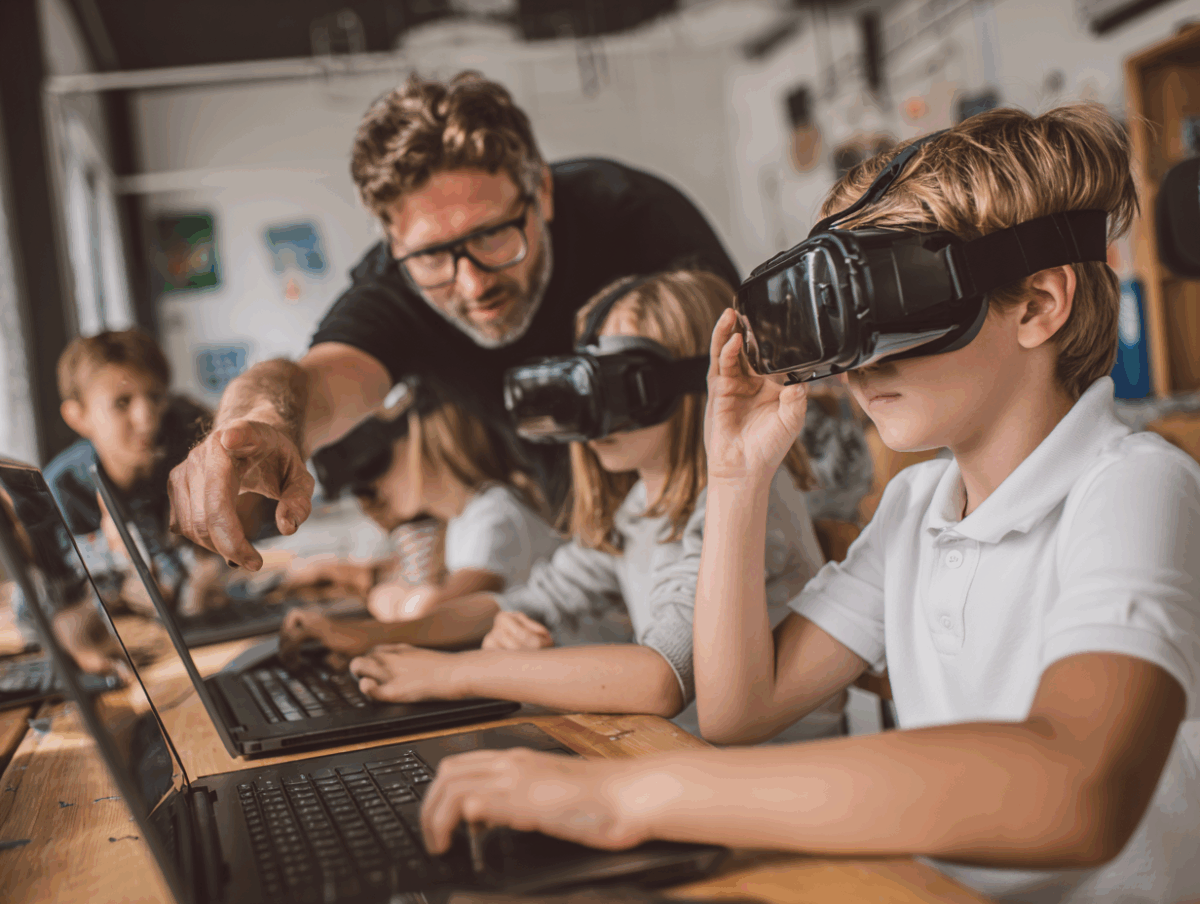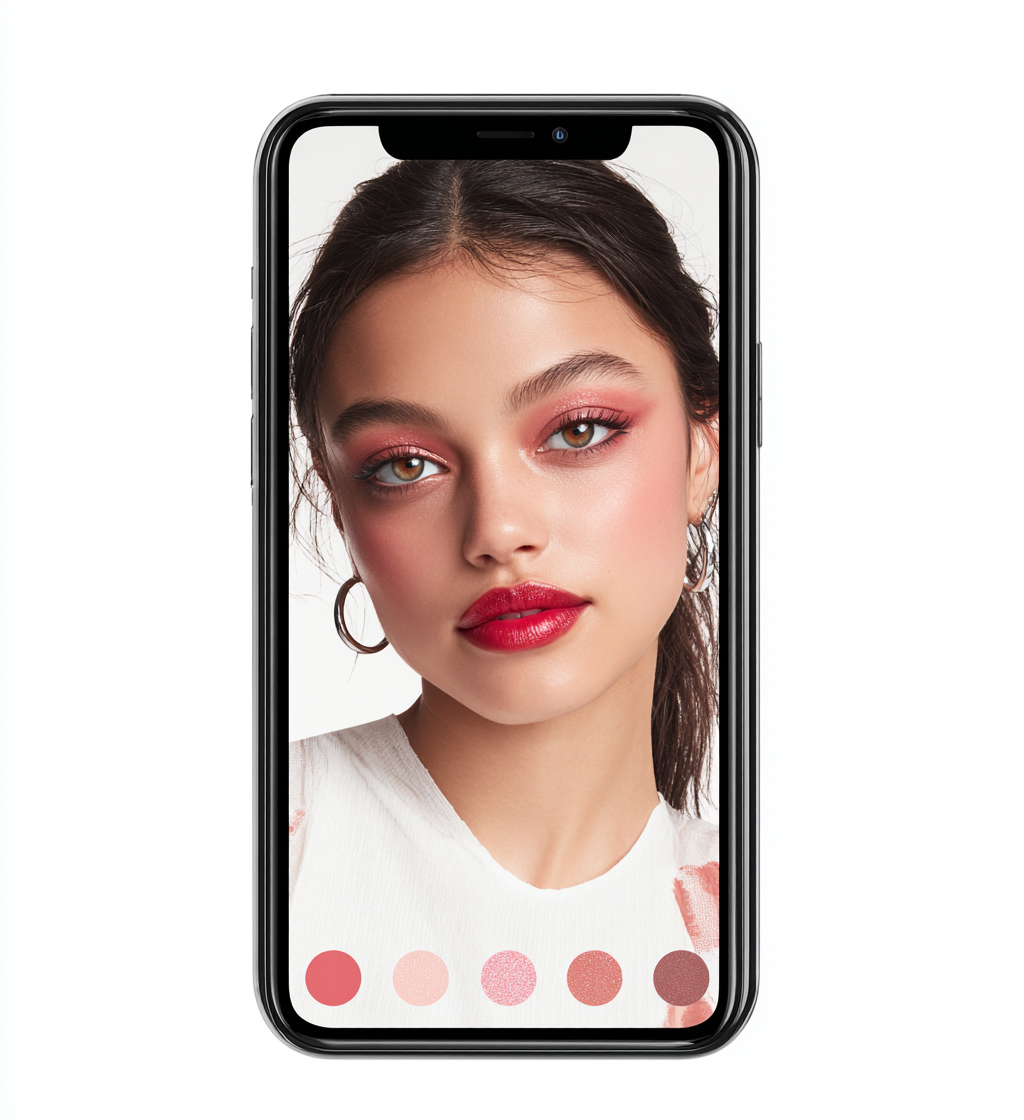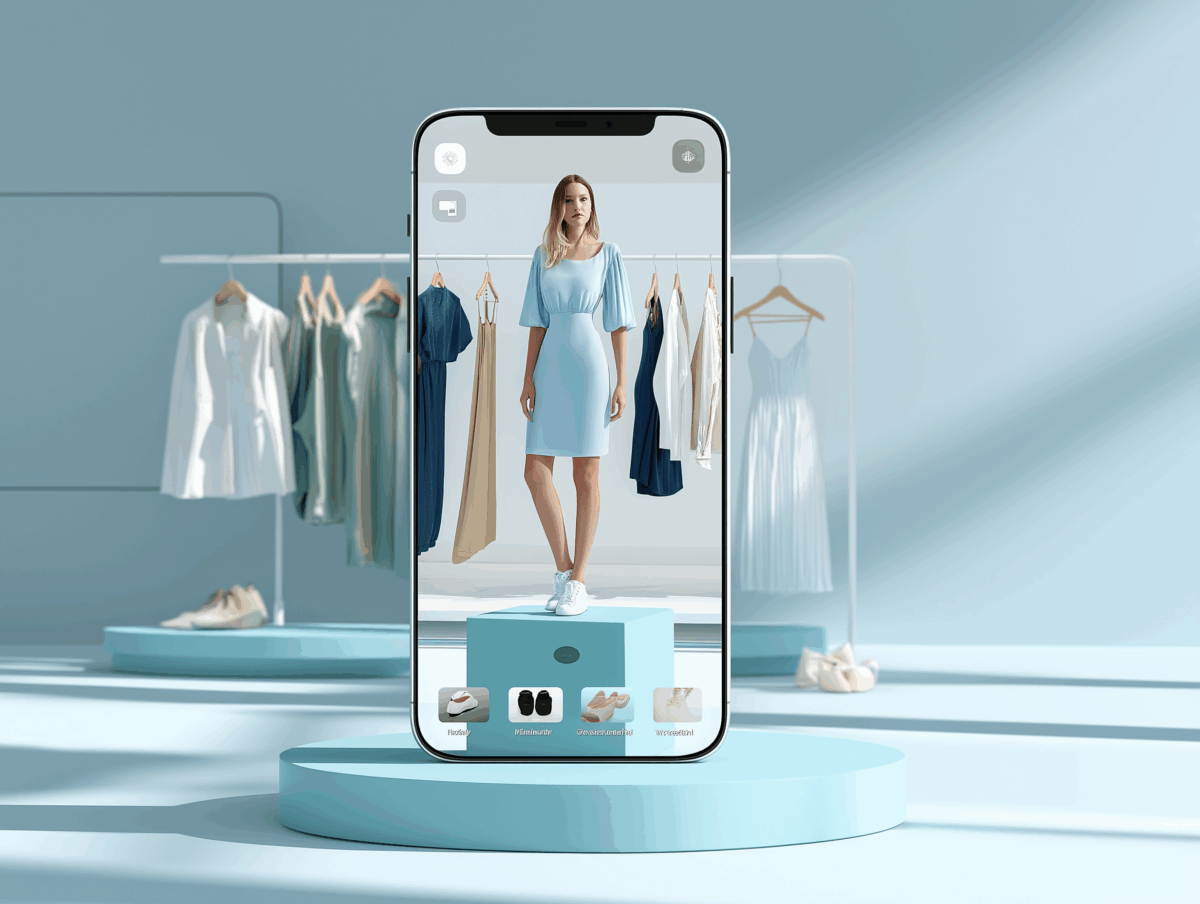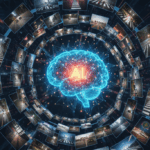Introduction: Beyond Spectacle to Strategic Value
Augmented Reality (AR) and Virtual Reality (VR), together referred to as Extended Reality (XR), were until recently seen as futuristic technologies—primarily associated with gaming, entertainment, or experimental prototypes. However, in the past few years, XR has transformed into a powerful tool for business applications, education, healthcare, and industrial production. This shift did not happen by chance; it was made possible by three key technological and market developments that have removed the main barriers to widespread XR adoption.
What follows is an overview of the core factors that now form the foundation of modern XR solutions: advanced infrastructure powered by Edge Artificial Intelligence (AI) and 5G networks, new methods for automated volumetric content creation, and the business transformation driven by the COVID-19 pandemic. Together, these forces not only make XR practical and efficient but position it as a strategically important asset for organizations seeking to increase productivity, reduce costs, and enhance collaboration:
1. Edge AI and 5G: The Infrastructure Foundation
The combination of edge computing and 5G has eliminated the latency issues that once hindered AR/VR. With sub-20 ms round-trip times, real-time processing is now possible even on lightweight wearables. Tasks like object recognition and gesture tracking run smoothly, enabling practical applications—from surgeons receiving live anatomical overlays to factory workers accessing predictive maintenance data and teams collaborating through seamless XR interaction [1-3]
2. Volumetric Content Pipelines: Democratizing 3D Creation
Creating immersive XR content is now faster and more affordable. AI-driven tools automate 3D environment generation, while photogrammetry and NeRFs turn 2D images into realistic models. This cuts production time by up to 45%, allowing organizations to scale training and simulation efforts. What once took months and large budgets can now be done in weeks by subject matter experts using familiar tools [4-7].
3. Post-Pandemic Digital Transformation: Sustained Investment Momentum
The pandemic highlighted XR’s value beyond emergency solutions. Remote collaboration often outperformed in-person meetings, prompting lasting shifts in budget priorities. XR now plays a vital role in training and operations for hybrid teams. Organizations report faster problem-solving, reduced service costs, and higher learner engagement—making XR a permanent fixture in digital transformation strategies [8, 9].
The Convergence Effect
Together, edge computing, scalable content creation, and long-term strategic investment have turned XR into a business-critical tool. Companies embracing all three are seeing up to 25% productivity gains in their first year, proving that XR is no longer experimental—it’s essential.
AI in Healthcare: Training, Diagnostics, and Therapy
The healthcare sector has emerged as one of the most transformative applications of AI-powered AR/VR technology, with implementations spanning surgical training, patient treatment, and diagnostic assistance. The convergence of machine learning algorithms with immersive visualization has created new paradigms for medical education, therapeutic intervention, and clinical decision-making that are fundamentally reshaping healthcare delivery.
Immersive Training Platforms
Randomized studies show that immersive simulators reduce error rates among novices by 35–40% compared to traditional video-based instruction, especially in complex procedures that demand precision and strong spatial awareness. These VR training systems incorporate features like haptic feedback, lifelike tissue interaction, and performance tracking to create realistic and repeatable learning environments. Trainees benefit from detailed feedback on factors such as hand stability, tool movement, and timing, helping them improve more efficiently. The consistency of VR-based training also helps standardize procedural education across institutions, while allowing learners to repeatedly practice high-risk techniques without putting patients or resources at risk [10].

Intraoperative AR Enhancement
In modern operating rooms, advanced visualization systems can now overlay MRI data directly onto a patient’s anatomy with sub-2 mm accuracy, giving surgeons a clear, real-time view of internal structures, blood vessels, and tumor boundaries during minimally invasive procedures. These systems allow 3D models from pre-operative scans to be aligned precisely with the surgical field, offering continuous visual guidance. Surgical instruments are tracked live, with visual markers and alerts helping maintain precision and safety. Team coordination is also enhanced, as multiple staff members can view the same augmented displays at once. In practice, these tools are already improving outcomes in microsurgical fields: in vascular surgery, they help map out complex vessel paths, cutting procedure times by up to 25%; in neurosurgery, they support safe navigation around delicate brain structures; and in orthopedics, they assist in accurate implant placement, reducing the need for corrective surgeries [11-13].
AI in Education: Personalized Learning and Virtual Classrooms
The educational landscape is transforming as AI-powered extended reality technologies create unprecedented opportunities for personalized, immersive learning experiences that adapt to individual cognitive needs in real-time.

Intelligent Tutoring Integration
Adaptive XR learning tools are transforming education by combining immersive environments with real-time responsiveness to student needs, leading to a 20% increase in retention rates in STEM subjects. These systems track how students interact with the material, monitor their understanding, and adjust the difficulty level and teaching style on the fly. By analyzing patterns in student behavior, they can anticipate where learners might struggle and shift strategies before frustration sets in. Whether through visual, auditory, or hands-on approaches, the content is tailored to match each student’s learning style, creating a more engaging and effective experience overall [14].
Biometric Learning Analytics
In immersive learning environments, eye-tracking technology allows systems to detect when a student loses focus or begins to struggle—often within just a couple of seconds—prompting immediate support or content adjustments. By analyzing where students are looking and how they respond emotionally, educators can better understand what captures attention and what causes confusion or frustration. These insights help fine-tune content and guide timely interventions before students disengage. As a result, virtual reality learning environments have been shown to improve retention dramatically, with students remembering material 75% longer compared to those in traditional slide-based classes—thanks to the engaging, multi-sensory nature of the experience [15, 16].
AI in Retail: Immersive Shopping and Customer Insights
The retail landscape is experiencing a profound transformation as artificial intelligence converges with immersive technologies to create unprecedented shopping experiences. This evolution extends far beyond novelty features, delivering measurable business outcomes that are reshaping how consumers discover, evaluate, and purchase products across digital and physical channels.
Virtual Try-On Revolution and Conversion Impact
Virtual try-on platforms boost online conversion 2.5× while trimming return rates 20–30%, representing one of the most significant performance improvements in e-commerce technology. These AI-powered systems leverage computer vision algorithms to analyze facial features, body proportions, and skin tones, enabling customers to visualize products with remarkable accuracy before purchase.
Brands implementing virtual try-on features experience 30-40% increases in conversions while simultaneously achieving return rate reductions of up to 40%. This dual benefit addresses two critical pain points in online retail: customer hesitation and costly product returns that traditionally plague fashion and cosmetics sectors.
Enhanced Customer Engagement includes a 200% increase in user interaction compared to static product views, 25% longer browsing sessions when AR tools are available, and 40% higher click-through rates on product pages with immersive features [17].

Omnichannel AR Navigation and Personalization
Omnichannel pilots show AR navigation apps increase dwell time by 19% and basket size by 12% when paired with conversational AI stylists. These systems create seamless bridges between digital and physical retail experiences, using visual positioning systems accurate to within centimeters to guide customers through store layouts while delivering personalized recommendations.
Smart Store Integration features real-time promotional targeting based on customer location and preferences, interactive wayfinding with AR overlays showing optimal routes to desired products, and AI-powered styling advice delivered through conversational interfaces that understand individual taste profiles [18-19].
AI in Industry: Predictive Maintenance and Remote Collaboration
Industrial operations are experiencing a paradigm shift as AI-powered AR/VR technologies transform traditional maintenance workflows and enable unprecedented levels of remote collaboration. This convergence of artificial intelligence, computer vision, and immersive technologies is delivering tangible productivity gains while reducing operational costs across manufacturing, mining, and heavy industry sectors.
Edge AI and Smart Glasses for Predictive Maintenance
Edge-deployed vision models on smart glasses detect component anomalies with 92% precision, notifying technicians via holographic arrows and step-by-step overlays. These systems represent a breakthrough in wearable industrial technology, enabling hands-free operation while maintaining high diagnostic accuracy. Smart glasses equipped with AI-powered computer vision can access real-time data from connected IoT sensors, enabling predictive maintenance that prevents costly breakdowns.
The integration of machine learning algorithms with augmented reality creates contextual insights and predictive maintenance suggestions that guide technicians through complex repair procedures. Industrial applications leverage lightweight micro-services architecture to deploy AI components for predictive analytics, estimating potential equipment failures and enabling proactive maintenance scheduling [20].

Remote Expert Support and Collaboration
AR video annotations cut mean-time-to-repair 30%, saving $4M annually in a single mining operation. This dramatic improvement stems from the ability to connect field technicians with remote specialists who can provide real-time guidance through AR overlays. Mining companies have demonstrated that remote problem-solving allows supervisors to virtually join teams across vast geographical distances, dramatically reducing travel costs and response times.
The technology enables remote experts to provide specialist support through cloud-based platforms that generate process data from industrial equipment. AR-enabled remote assistance can save time and long, difficult journeys while providing troubleshooting and maintenance guidance in real-time [21].
Human-Robot Teaming with Large Language Models
New frameworks embed large language models in XR interfaces to guide robots through intent-aware dialogue, expanding task generalization by 40%. Research platforms like XaiR demonstrate how multimodal large language models can be integrated with XR headsets to enhance machine understanding of physical spaces. These systems achieve over 90% accuracy in task guidance while maintaining 85% accuracy in AR content anchoring.
The integration enables natural language interaction between humans and robots, with LLMs serving as central coordination units that bridge unstructured human communication with structured robot actions [22].
Conclusion
The convergence of artificial intelligence with immersive reality technologies represents a fundamental shift in enterprise computing, transforming AR/VR from speculative demonstrations into essential competitive infrastructure. Organizations that successfully integrate edge AI processing, automated content creation pipelines, and post-pandemic operational models are not merely digitizing existing processes—they are re-architecting entire value chains to be more resilient, personalized, and data-driven than their traditional counterparts. The measurable outcomes across healthcare, education, retail, and industrial applications demonstrate that AI-enhanced immersive technologies have reached a critical inflection point where return on investment is immediate and substantial. As these systems continue to mature, the strategic imperative becomes clear: mastery of the interdisciplinary toolkit spanning computer vision, spatial computing, and human-centered design will determine which organizations thrive in an economy increasingly defined by intelligent, immersive experiences rather than conventional screen-based interactions.
References
- STL Partners. “5G and AR/VR: Transformative Use Cases with Edge Computing.” STL Partners, 2025. Available at: https://stlpartners.com/articles/edge-computing/5g-edge-ar-vr-use-cases/
- Xenon Stack. “Edge AI and 5G Integration.” Xenon Stack Blog, December 19, 2024. Available at: https://www.xenonstack.com/blog/edge-ai-and-5g-integration
- Nextech AR. “How Is 5G Unlocking The True Potential Of AR And VR?” Nextech AR Blog, May 21, 2025. Available at: https://www.nextechar.com/blog/how-is-5g-unlocking-the-true-potential-of-ar-and-vr
- Number Analytics. “Volumetric Video in VR: A Comprehensive Guide.” Number Analytics Blog, June 11, 2025. Available at: https://www.numberanalytics.com/blog/volumetric-video-vr-guide
- ReadWrite. “Volumetric Video is Becoming a Key Content for VR.” ReadWrite, July 2, 2020. Available at: https://readwrite.com/volumetric-video-is-becoming-a-key-content-for-vr/
- XR Association. “New Reality in Immersive Technology (XR): Insights and Industry Trends.” XR Association, 2020. Available at: https://xra.org/a-new-reality-in-immersive-technology-2020/
- Consumer Technology Association. “2021 XR Enterprise Trends Report.” CTA Research, October 2021. Available at: https://www.cta.tech/research/2021-xr-enterprise-trends/
- Towards Healthcare. “AR & VR in Healthcare Market Leads Healthy 24.81% CAGR by 2034.” Towards Healthcare, May 14, 2025. Available at: https://www.towardshealthcare.com/insights/augmented-and-virtual-reality-in-healthcare-market
- Toolify AI. “Revolutionizing Education with AI, AR, and VR: Inspiring Examples.” Toolify AI News, March 14, 2025. Available at: https://www.toolify.ai/ai-news/revolutionizing-education-with-ai-ar-and-vr-inspiring-examples-528266
- Iqbal, Arham I et al. “Immersive Technologies in Healthcare: An In-Depth Exploration of Virtual Reality and Augmented Reality in Enhancing Patient Care, Medical Education, and Training Paradigms.” Journal of primary care & community health vol. 15 (2024). Available at: https://pmc.ncbi.nlm.nih.gov/articles/PMC11528804/
- Zou, Xuan et al. “AI-Driven Diagnostic Assistance in Medical Inquiry: Reinforcement Learning Algorithm Development and Validation.” Journal of medical Internet research vol. 26 e54616. 23 Aug. 2024, Available at: https://pubmed.ncbi.nlm.nih.gov/39178403/
- Ma, Bingjie et al. “The benefits and safety of a virtual reality intervention in patients suffering from acute and chronic pain: A pilot study.” Digital health vol. 11 20552076241308703. 6 Jan. 2025, Available at: https://pubmed.ncbi.nlm.nih.gov/39777063/
- Schmidt, M W et al. “Virtual reality simulation in robot-assisted surgery: meta-analysis of skill transfer and predictability of skill.” BJS open vol. 5,2 (2021).
Available at: https://pubmed.ncbi.nlm.nih.gov/33864069/ - da Silva Soares, Raimundo Jr et al. “Exploring the potential of eye tracking on personalized learning and real-time feedback in modern education.” Progress in brain research vol. 282 (2023). Available at: https://pubmed.ncbi.nlm.nih.gov/38035909/
- AR Insider. “Can XR Unlock Inclusive Experiences for Learners.” AR Insider, February 19, 2025. Available at: https://arinsider.co/2025/02/19/can-xr-unlock-inclusive-experiences-for-learners/
- XR Today. “AI & Immersive Learning: Accelerating Skill Development with AI and XR.” XR Today, June 4, 2025. Available at: https://www.xrtoday.com/mixed-reality/ai-immersive-learning-accelerating-skill-development-with-ai-and-xr/
- Retail Dive. “Virtual try-on offers more sales: Perfect Corp.” Retail Dive, 2025. Available at: https://www.retaildive.com/news/virtual-try-on-offers-more-sales-perfect-corp/723798/
- Aamir, Ebad and Ahmed, Raees and Hassan, Mursaleen and Ahmed, Rameez and Waseem, Fatima, Automated T-Shirt Sizing with Computer Vision (AI) (March 2, 2024). Available at SSRN: https://ssrn.com/abstract=4745851
- VSight.io. “CMP Mining Company Success with AR Remote Assistance: VSight Case Study.” VSight Remote Assistance Solutions, November 7, 2024. Available at: https://vsight.io/vsight-remote-for-cmp/
- Srinidhi, S., Lu, E., & Rowe, A. “XaiR: An XR Platform that Integrates Large Language Models with the Physical World.” Proceedings of IEEE International Symposium on Mixed and Augmented Reality (ISMAR), 2024. Available at: https://openreview.net/forum?id=QFOcAPvFkS
- Wideum. “Top Industries Adopting Smart Glasses for Remote Assistance in 2025.” Wideum Technology Solutions, March 4, 2025. Available at: https://wideum.com/news/top-industries-adopting-smart-glasses-for-remote-assistance-in-2025/
Author
Associate Professor Časlav Livada, PhD
Text and/or images are partially generated by artificial intelligence

